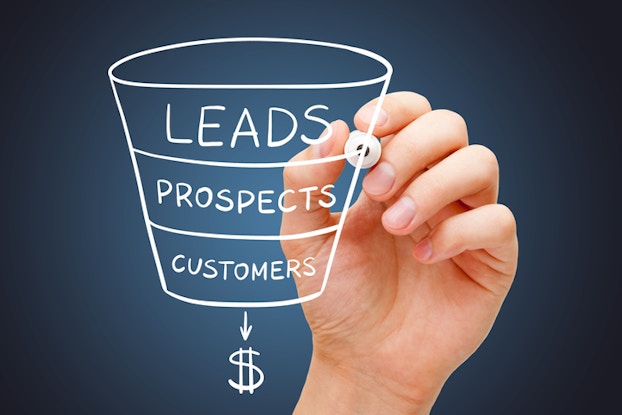
To convert someone into a paying customer, most businesses typically follow two related but distinct processes: the “lead process” and the “sales process.” While you’re likely familiar with the latter, you might not realize that your conversions depend heavily on the former.
To even make it as far as the sales process, you’ll have to first sort through your leads before turning them into sales. Here’s everything you should know about the two processes.
What is a lead process?
The lead process, sometimes referred to as the lead management process, is how your business finds potential customers and clients. This may be done using several different methods, including networking, cold calling, emailing or using specialized, data-driven sales prospecting tools.
While it's relatively easy to find people to contact, it's important to properly qualify those leads — that is, thoroughly vet them to ensure they will be receptive to your sales pitch. Otherwise, you'll waste your time chasing leads that don’t result in a sale.
In an article for small business advisory group SCORE, sales and marketing expert Gregg Schwartz recommends taking the following steps to qualify your leads:
- Be specific with your qualifying information. Look for multiple criteria that could indicate someone would be interested in buying from or working with your business, not just one broad qualifier.
- Ask the right questions to find out how important your services are to your leads.
- Look for companies that are large enough to support the solution(s) you sell.
- Educate your leads to ensure they understand and see the value in your product or service.
- Focus on leads that could lead to long-term, ongoing relationships, rather than short-term "low hanging fruit."
Through the lead qualifying process, you'll narrow down your initial lead list to the individuals and organizations that are most likely to do business with your company. Once you've identified these prospects, it’s time to begin the sales process and work toward closing the deal.
[Read: 6 Alternative to Sales Navigator]
Once you've identified these prospects, it’s time to begin the sales process and work toward closing the deal.
What is a sales process?
The sales process involves turning your qualified leads into satisfied customers. Here are the basic steps of this process:
- Get to know your leads and where they spend their time online.
- Attract your leads’ attention on those platforms by inviting them to engage with you and share their contact information.
- Reach out to customers and start conversations that position your product or service as a solution to their needs.
- Track your relationships with a customer relationship management (CRM) tool so you can stay in touch.
- Review, revise and adjust your strategy as needed.
[Read: 7 Common CRM Questions]
Tips for closing the sale
Sometimes, simply offering a solution to your consumers’ problems isn’t enough to drive sales. In a Huffington Post article, marketing expert Jonathan Long of Market Domination Media offered these tips to help convert leads into sales:
- Offer an incentive. A free gift or a time-sensitive discount can encourage leads to convert.
- Show them the ROI. What can your business offer that might improve your leads’ bottom line? Show them exactly how your products or services can help them achieve their goals.
- Ask questions. When you ask engaging questions, you open a dialogue that allows prospective customers to better understand your products or services and trust your brand.
- Follow up. Your leads are busy. Sometimes, they need a quick phone call or email to remind them about your product or services.
- Set a time limit. Don't waste your time following up with leads who don't respond within a certain amount of time, such as 30 days.
- Ask for the sale. Without being pushy, ask your leads if they are ready to purchase. If they say no, ask what you can do to earn their business.
Mastering both the lead and sales processes is key to generating sales and growing your business. When you invest in your leads, you simultaneously invest in your brand — and your results will speak for themselves.
CO— does not review or recommend products or services. For more information on choosing the best CRM software, visit our friends at business.com.
CO— aims to bring you inspiration from leading respected experts. However, before making any business decision, you should consult a professional who can advise you based on your individual situation.
CO—is committed to helping you start, run and grow your small business. Learn more about the benefits of small business membership in the U.S. Chamber of Commerce, here.







